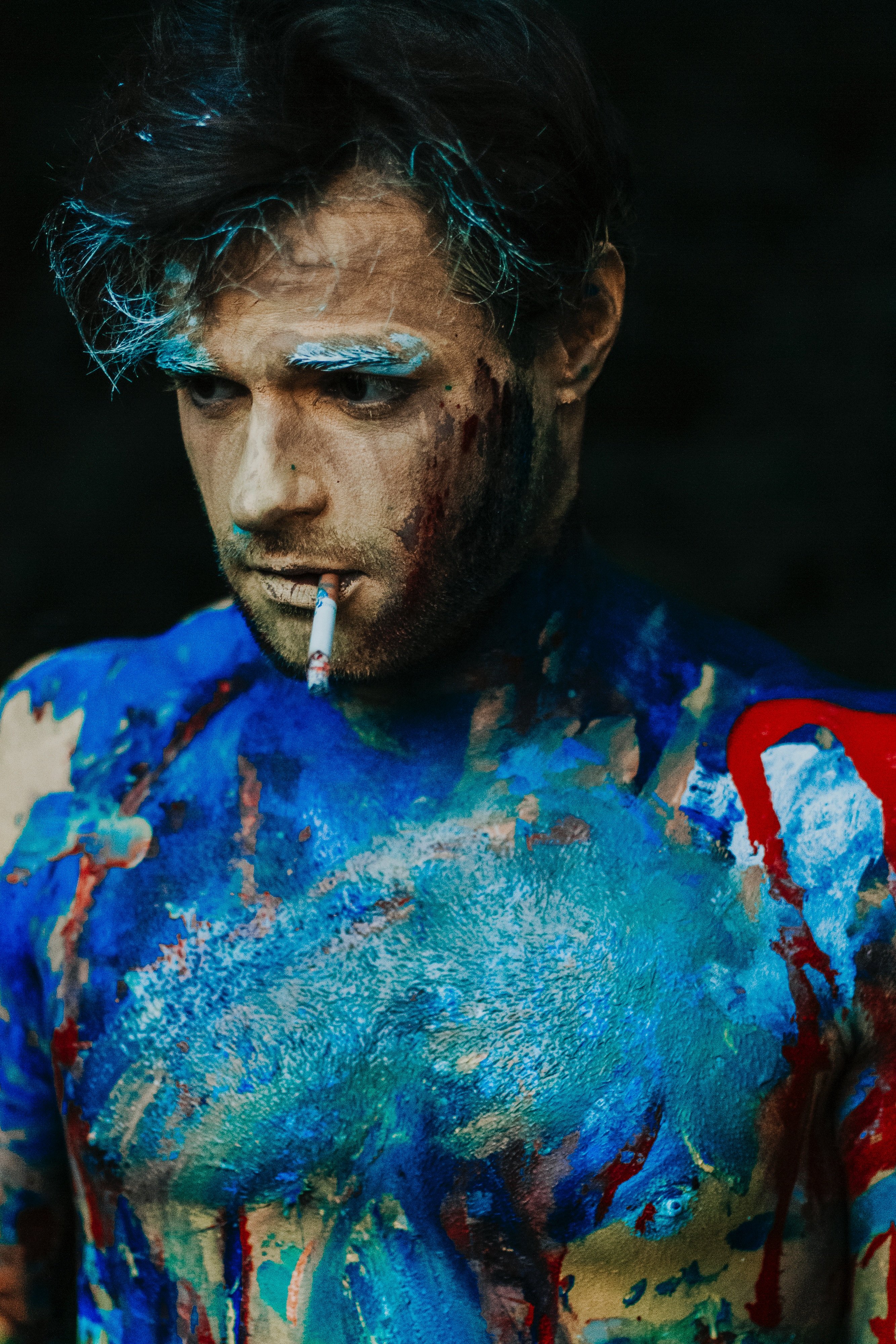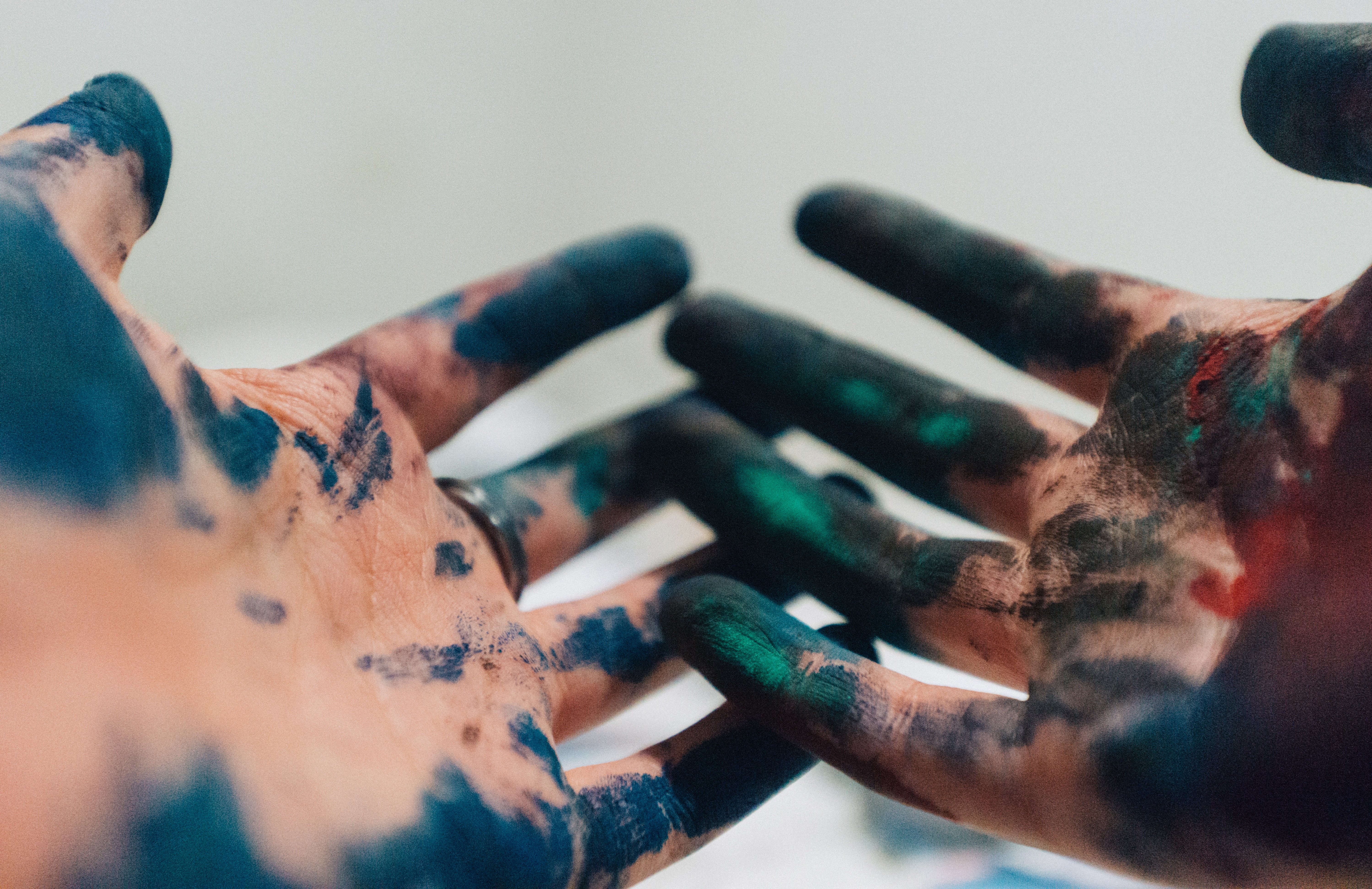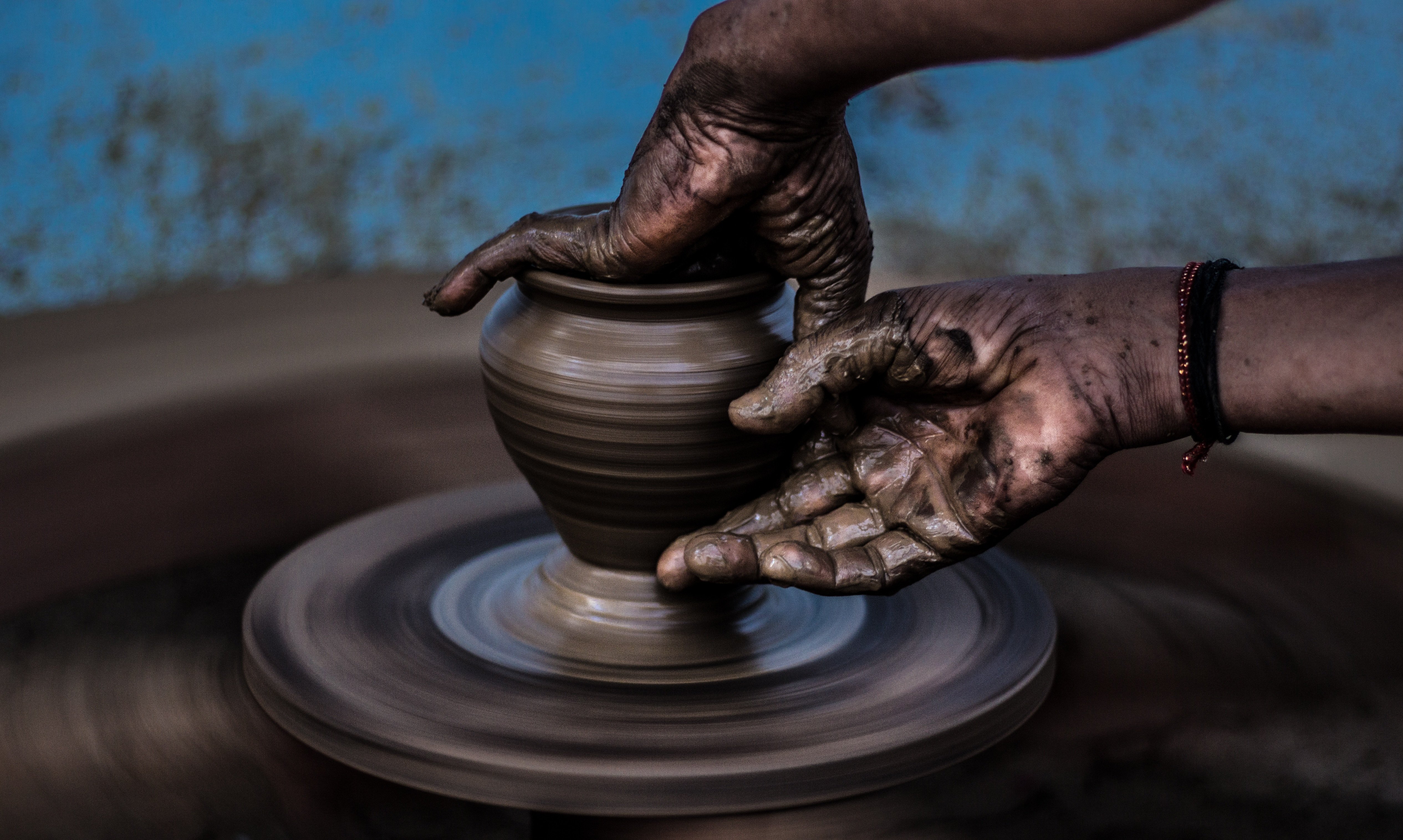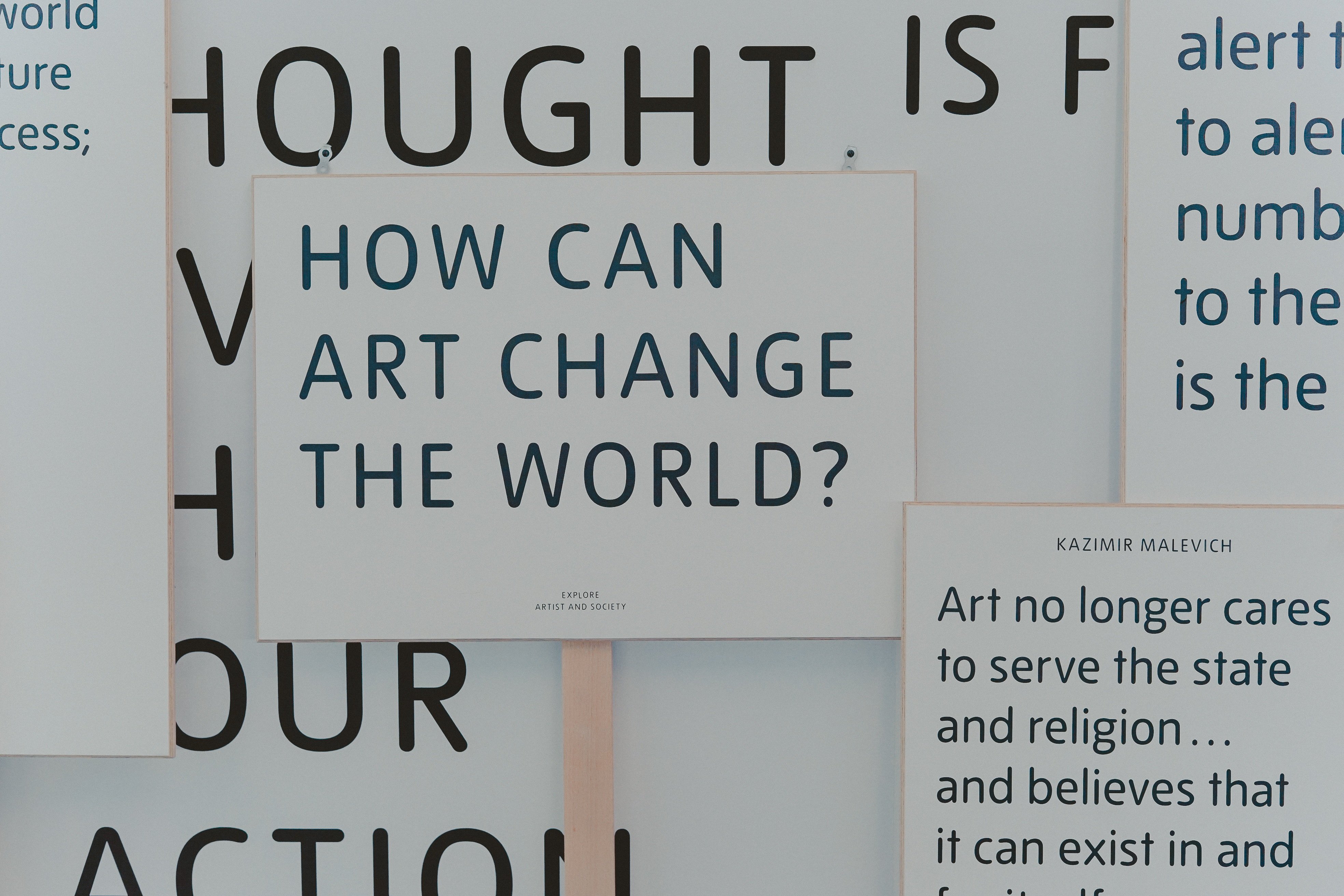Since people first started making it, the debate has raged: what exactly is art and how do we define it?

The thing is I’m not sure you can define art. It’s subjective. I don’t think it is possible to quantify art any more than it is possible to quantify people.
That being said, one thing I do know about art is that it instills imagination and hope in the minds of those who make it and view it. We’ve all heard the saying “if you can dream it, you can do it”. Well, I believe that’s true. I think it is awfully hard to imagine a better future for yourself, or for your community, if you aren’t able to envision that future and creatively solve any obstacles in your way.
Art is not, as the metaphysicians say, the manifestation of some mysterious idea of beauty or God; it is not, as the aesthetical physiologists say, a game in which man lets off his excess of stored-up energy; it is not the expression of man's emotions by external signs; it is not the production of pleasing objects; and, above all, it is not pleasure; but it is a means of union among men, joining them together in the same feelings, and indispensable for the life and progress toward well-being of individuals and of humanity. -- Leo Tolstoy
I agree with Tolstoy. Intrinsically, I have always been drawn to art and the creative community because of its power to unite people and build empathy amongst them. Something magical happens when you see people’s walls come down as they begin to create--a sort of ageless delight settling over them. If we could get more people to tap into the same font of creativity they possessed as children, the world would be a better place.
“Every child is an artist. The problem is how to remain an artist once we grow up.” -- Pablo Picasso
I think about this quote from Picasso regularly as a creative person. Part of my job is to help communities who might not usually identify themselves as artists (for example I work in a prison) tap into their imagination and creative energies. As a theatre artist, the element of PLAY is a huge factor in helping me get adults out of their heads and into an artistic frame of mind.

I believe that art is the primary force in our culture that helps us to dream, and to connect with other dreamers.
I interact with art every day: I’m either making it, writing about it, or viewing it. And, because of the communities in which I work, I regularly see powerful expressions of creativity far beyond the walls of a traditional gallery or theatre space.
I have had the most transformative artistic experiences in the most unlikely of places. I say this because sometimes artistic excellence can be equated with those artists who are associated with traditional venues, producers, and opportunities. You can read my recent post on race and gender disparities in American theatre to get a better sense of how arts leaders and institutions have excluded nontraditional narratives for all too long from mainstream opportunities (this does not just apply to theatre casting, but also to grant recipients, residencies, and more).
Above all, artists must not be only in art galleries or museums—they must be present in all possible activities. The artist must be the sponsor of thought in whatever endeavor people take on, at every level. -- Michelangelo Pistoletto
Despite the struggle to decide what qualifies as art and who determines merit, the freedom within the creative field to innovate and push boundaries of forms that have been around for centuries still boggles my mind. I am incredibly blessed to work with artists of all disciplines and learn about what moves them to create.

From my experience, here are the 4 reasons I see art being made:
Art for pure expression
This is “art for art’s sake”. This art is a study in form, technique, and medium. The goal is to create something that expresses an idea, a feeling, or a story. While it may certainly tie to human or civic themes, that is not the primary goal. The primary purpose is to capture an aesthetic, or create something new.
Art for personal transformation/empowerment
This art is tuned to the individual artist. It is about identity, self-empowerment, and very likely therapeutic. This art can also transcend the individual experience, and begin to empower a community experiencing a similar issue. For example, an artist approaching mental health could transform not only their own experience, but also the experiences of members of their audience who engage with them through the performance event.
Art for social change
This art addresses inequity directly. Sometimes this art could look like professional artists making work in response to a civil or human rights issue. Sometimes this art could look like artists working directly within communities to activate individuals as artists in their own right. This art is likely at the intersection of art and activism (I like to call it artivism).
Art as business practice
This art is part of an artist’s brand identity and professional plan. A photographer needs to create prints to sell, a performer needs to have something to perform if they wish to sell tickets. At some point, there is an economic component to art-making, and for those making a living off of their creativity, it is impossible to forget this aspect.
“Creativity is contagious, pass it on.” -- Albert Einstein
Another of my favorite quotes that is SO TRUE. Art begets art begets art. While I don’t know if you can measure art, I do think you can see exponential growth from individuals and artist collectives when they freely collaborate and let go of any ego attached to the creative process.

Ultimately, the thing I love most about art is that is captures the essence of what it means to be human.
When I experience art I’m experiencing a window into someone else’s view of the world. I’m learning about other people, and by so doing, I’m also learning about myself. I have found that art and creativity are deeply holistic ways of getting to know yourself and the world around you; and I have often felt that my artistic practice is akin to a spiritual practice. Much like religion, this “faith” I have in art requires my utter commitment, dedication, and passion. While I gave up on the church a long time ago (sorry, Mom) I’ve only grown closer to my art.
Perhaps this is how I experience the divine on earth.
And with that, I’ll leave you with 3 questions:
- What do you think art is?
- What role do you see art playing in our world?
- What do you think makes a piece of art GREAT?
I’d love for you to share your thoughts in the comments! :)

I just went to prison for 5 months. Again. | 03
The State of the Art | Race and gender in American theatre.
ART MIX-UP CONTEST | 02



